
To create a truly great cup of coffee or shot of espresso you need two things: high quality equipment and high quality coffee beans. The type of bean you use combined with your chosen equipment is the determining factor to the taste, flavor, and satisfaction you get out of your cup of coffee or shot of espresso. BeverageFactory.com may specialize in all things Espresso Maker, Coffee Maker, and Coffee Grinder related, but we also know a thing or two about the bean. We know that the key to getting the most out of your coffee brewing equipment is buying the coffee beans that fit your palate. Maybe you are a little unclear when it comes to dark roasts, light roasts, Kenyan or Sumatran. No worries, my friend, we will explain it all and have you picking out the flavor nuances in your daily brew in no time!
There are 3 keys to unlocking the flavor of your chosen bean: first is knowing what type of bean species you are purchasing, second is understanding your beans origins and its effect on flavor, and third is learning about the different roasts and their effects on the overall taste of your brew.
Key #1: A Tale of Two Beans
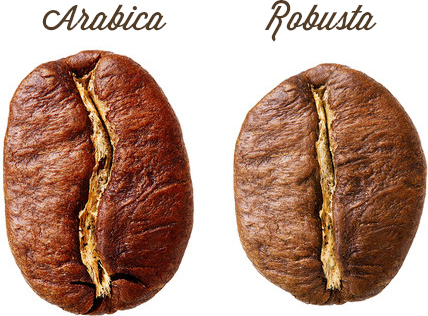
First thing to know about coffee beans is that there are two of them. What I mean by this is that there are two distinct species of coffee beans: Arabica and Robusta. These two bean varieties are harvested differently, used differently, and taste differently. Where Robusta beans are more function over style, Arabica beans are all about style and substance. Knowing the differences between the two beans, will help you purchase coffee beans whose characteristics meet your taste expectations.
Arabica vs Robusta
In general, Arabica coffee beans are grown at high altitudes, cultivated with the care that a vintner may show his grapes. They carry twice the number of chromosomes that a Robusta bean carries and tend to even look different before roasting. Where Robusta beans are pale green with a brown tint, Arabica beans are deep green and slightly larger in size to boot.
While Robusta beans are definitely the hardier crop, Arabica beans produce a much superior brew whose flavors will be milder, more aromatic, and overall less bitter than those produced by Robusta beans. This is what makes Arabica blends richer in every sense of the word.
As I said earlier, Robusta beans are really all about function. Since they are a hearty and economical crop, the beans they produce are oftentimes used for blends. Sometimes the combination of Arabica and Robusta is just right for lighter roasts.
Key #2: Origin of the Bean
Like those who grow up in The Bronx may find themselves with a distinct accent the rest of their lives, where a coffee bean "grows up" will determine their flavor characteristics upon brewing no matter how darkly they are roasted or how they are brewed. Generally there are 3 world regions were the finest coffee beans originate and each region produces coffee with unique and distinct flavors.
Region 1: Latin America
You can expect beans originating from Central and South America, the Caribbean, Columbia, Costa Rica, Panama, and Mexico to posses the following flavor characteristics:
- Light body, sweet, balanced and with high acidity
- To preserve the brightness and downplay bitterness, these beans should have a mild to medium roast
- Beans from Latin America are easily enjoyed with all breakfast foods, toasts, and muffins
Region 2: Africa/Arabia
Coffee Beans grown on the continent of Africa, in the middle-east, and Arabia regions tend towards the below flavors:
- Medium body and acidity with an almost syrupy feel
- Recommended roast for coffee from this region is dark, to balance the complex flavors that can range from spicy to chocolaty, from wine-like to citrus-like
- Enjoy beans from Region 2 with milk chocolate or cheese tarts
Region 3: Indonesia and the Pacific Island Region
Beans from Asia, Indonesia, and surrounding Pacific Islands will have the following flavor characteristics:
- Heavy body with low acidity. Hearty and earthy flavors
- This robust blend should be roasted dark to very dark for a hearty brew that preserves the beans smooth and flowery undertones
- Brews of Region 3 beans are truly enjoyable with dark chocolate, caramel, and other rich deserts. Or enjoy a cup on its own; after all, it is an independent brew!
Key #3: What's In a Roast?
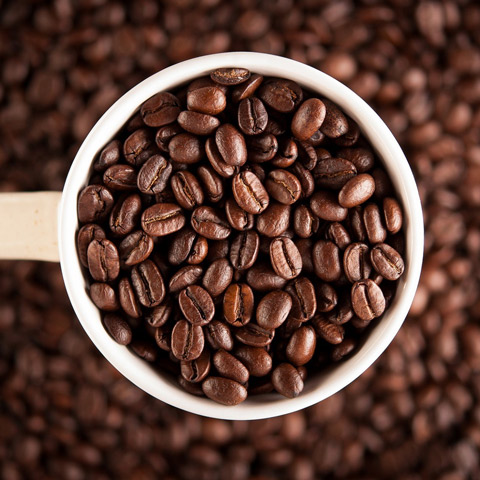
Familiarizing yourself with the different types of roasts and their characteristics is the fastest and easiest way to predict the flavor of the coffee beans you are about to brew. Along with the bean species and bean origin, the roast is heavily responsible for determining the aroma, acidity, body, and flavor of your chosen bean. Familiarize yourself with the following Roasting Rules, and you will be on your way to becoming a true coffee connoisseur!
Rule 1: Light Roasts = light brown cinnamon color with low body and low acidity (usually low in flavor too)
Rule 2: Medium Roasts = medium brown color with medium acidity and increases body
Rule 3: Dark Roasts = Deep brownish/black color with oil. Flavor may decrease while body increases
Rule 4: Dark roasts do not produce a stronger cup, but rather produce a more consistent cup.
Rule 5: Any type of bean from any region can be roasted light, medium, or dark.
The roast you choose, will depend on both the flavors or the feel of the coffee you prefer and what kind of coffee you are brewing. For example, dark roasts work very well with espresso. Within the general light, medium, and dark categories there are sub-categories of roasting and the roast type is usually associated with the region.
More to the Bean than Meets the Eye
So who ever thought each little coffee bean could be so complicated? Hopefully this brief introduction clarified a few things about coffee for you and helped you understand what the terminology of the bean means or more importantly how it effects your cup of coffee. After all, the goal has been and always will be delicious home brewed coffee and espresso. Understanding all you can about your coffee beans is one of the most important keys to succeeding in your coffee quest.


 Single Faucet Kegerator Beer Dispensers
Single Faucet Kegerator Beer Dispensers Dual Faucet Two Tap Kegerators
Dual Faucet Two Tap Kegerators Triple Faucet Three Tap Kegerators
Triple Faucet Three Tap Kegerators Undercounter Built-In Kegerators
Undercounter Built-In Kegerators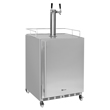 Outdoor Kegerator Beer Dispensers
Outdoor Kegerator Beer Dispensers Commercial Kegerators
Commercial Kegerators Mini Kegerators
Mini Kegerators Cold Brew & Nitro Coffee Dispenser Kegerators
Cold Brew & Nitro Coffee Dispenser Kegerators Home Brew Kegerators
Home Brew Kegerators Carbonated Water Kegerators
Carbonated Water Kegerators 15" Kegerators
15" Kegerators Kombucha Equipment
Kombucha Equipment Guinness® Dispensing Kegerators
Guinness® Dispensing Kegerators Wine Kegerators
Wine Kegerators Kegerator Cabinets
Kegerator Cabinets Kegerator Covers and Accessories
Kegerator Covers and Accessories Kegerators
Kegerators Kegerator Conversion Kits
Kegerator Conversion Kits Kegs & Keg Accessories
Kegs & Keg Accessories Beer Faucets
Beer Faucets Beer Shanks
Beer Shanks Draft Beer Towers
Draft Beer Towers Keg Taps Couplers
Keg Taps Couplers Regulators & Gas Equipment
Regulators & Gas Equipment Beer & Gas Line Hose
Beer & Gas Line Hose Co2 and Nitrogen Air Tanks
Co2 and Nitrogen Air Tanks Beer Line Cleaning Equipment
Beer Line Cleaning Equipment Drip Trays
Drip Trays System Fittings
System Fittings Jockey Boxes
Jockey Boxes Keg Beer Party Pumps
Keg Beer Party Pumps Glassware
Glassware Guinness® Dispensing Equipment
Guinness® Dispensing Equipment Remote Glycol Systems
Remote Glycol Systems Wine Cooler Refrigerators
Wine Cooler Refrigerators Wine Cellar Cabinets
Wine Cellar Cabinets Wine Racks
Wine Racks Cooling Units
Cooling Units Wine Dispensing Systems
Wine Dispensing Systems Wine Accessories
Wine Accessories Wine Making
Wine Making Nitro Hot Draft System
Nitro Hot Draft System Ready to Drink Bag-in-a-Box Coffee Dispensing Equipment
Ready to Drink Bag-in-a-Box Coffee Dispensing Equipment Nitrogen Infusers
Nitrogen Infusers Nitrogen Tanks & Generators
Nitrogen Tanks & Generators Nitrogen Beer Regulators
Nitrogen Beer Regulators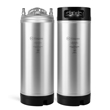 Nitro Cold Brew Coffee Kegs
Nitro Cold Brew Coffee Kegs Cold Brewed Coffee Tools
Cold Brewed Coffee Tools Cleaning Equipment
Cleaning Equipment Outdoor Appliances
Outdoor Appliances ADA Appliances
ADA Appliances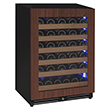 Panel Ready Appliances
Panel Ready Appliances Commercial Grade Appliances
Commercial Grade Appliances Beverage Centers
Beverage Centers Refrigerators
Refrigerators Drawer Refrigerators
Drawer Refrigerators Ice Makers
Ice Makers Water Dispensers & Accessories
Water Dispensers & Accessories Freezers
Freezers Home Brew Equipment Kits
Home Brew Equipment Kits Fermentation Equipment
Fermentation Equipment Boiling and Mashing Equipment
Boiling and Mashing Equipment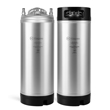 Home Brew Beer Kegs
Home Brew Beer Kegs Home Brew Kegerator Conversion Kits
Home Brew Kegerator Conversion Kits Brewing Tools
Brewing Tools Home Brew Ingredients
Home Brew Ingredients Cleaning Chemicals
Cleaning Chemicals Test Equipment
Test Equipment Home Brew Beer Bottles and Bottling Equipment
Home Brew Beer Bottles and Bottling Equipment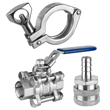 Brewery Fittings
Brewery Fittings Draft Beer Equipment
Draft Beer Equipment Homebrewing Equipment
Homebrewing Equipment Wine Equipment
Wine Equipment Luxury Appliances and Refrigeration
Luxury Appliances and Refrigeration Coffee Equipment
Coffee Equipment Kombucha
Kombucha The Beverage Blog
The Beverage Blog Frequently Asked Beer Questions
Frequently Asked Beer Questions Shop by Brand
Shop by Brand Shop by Category
Shop by Category